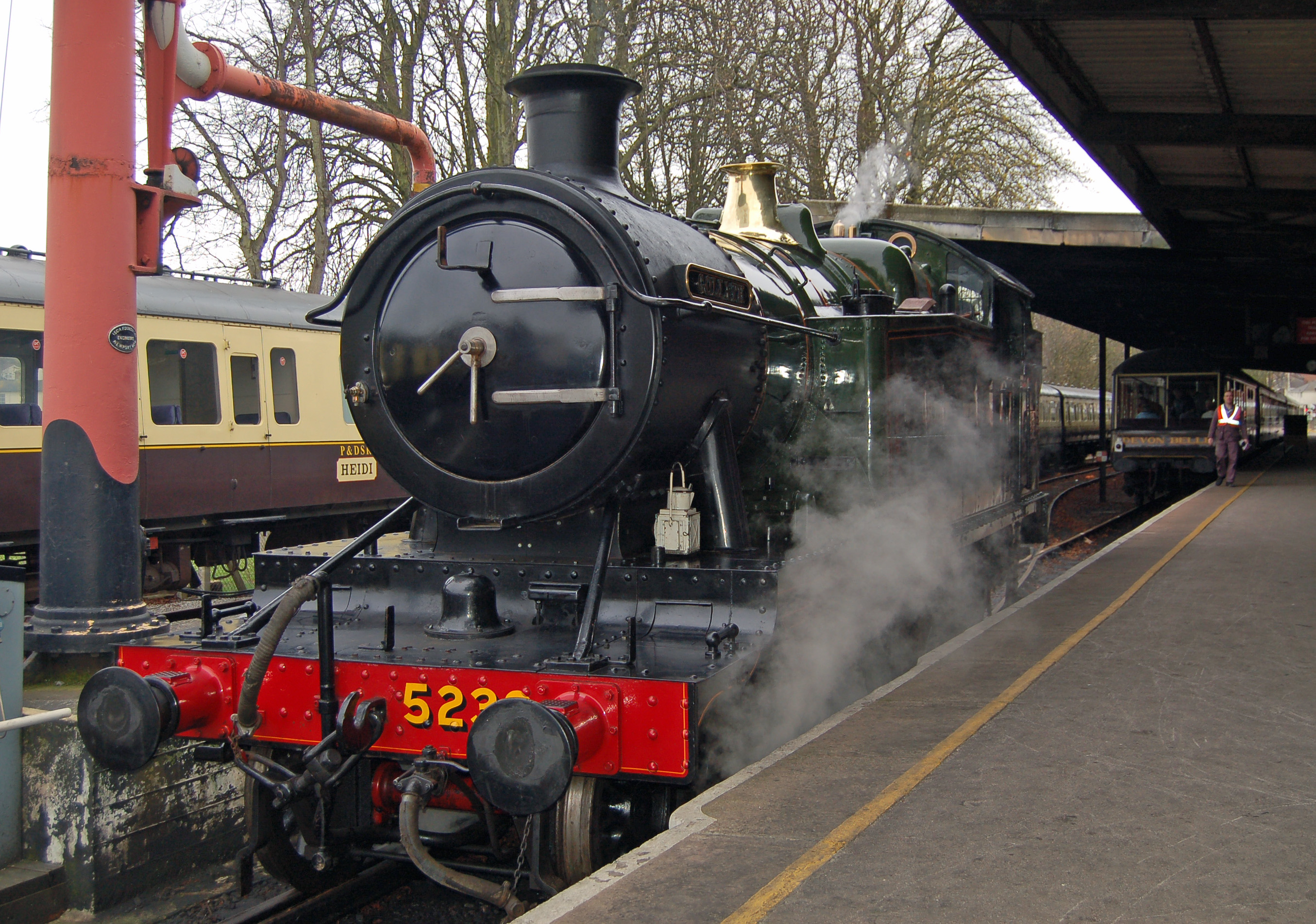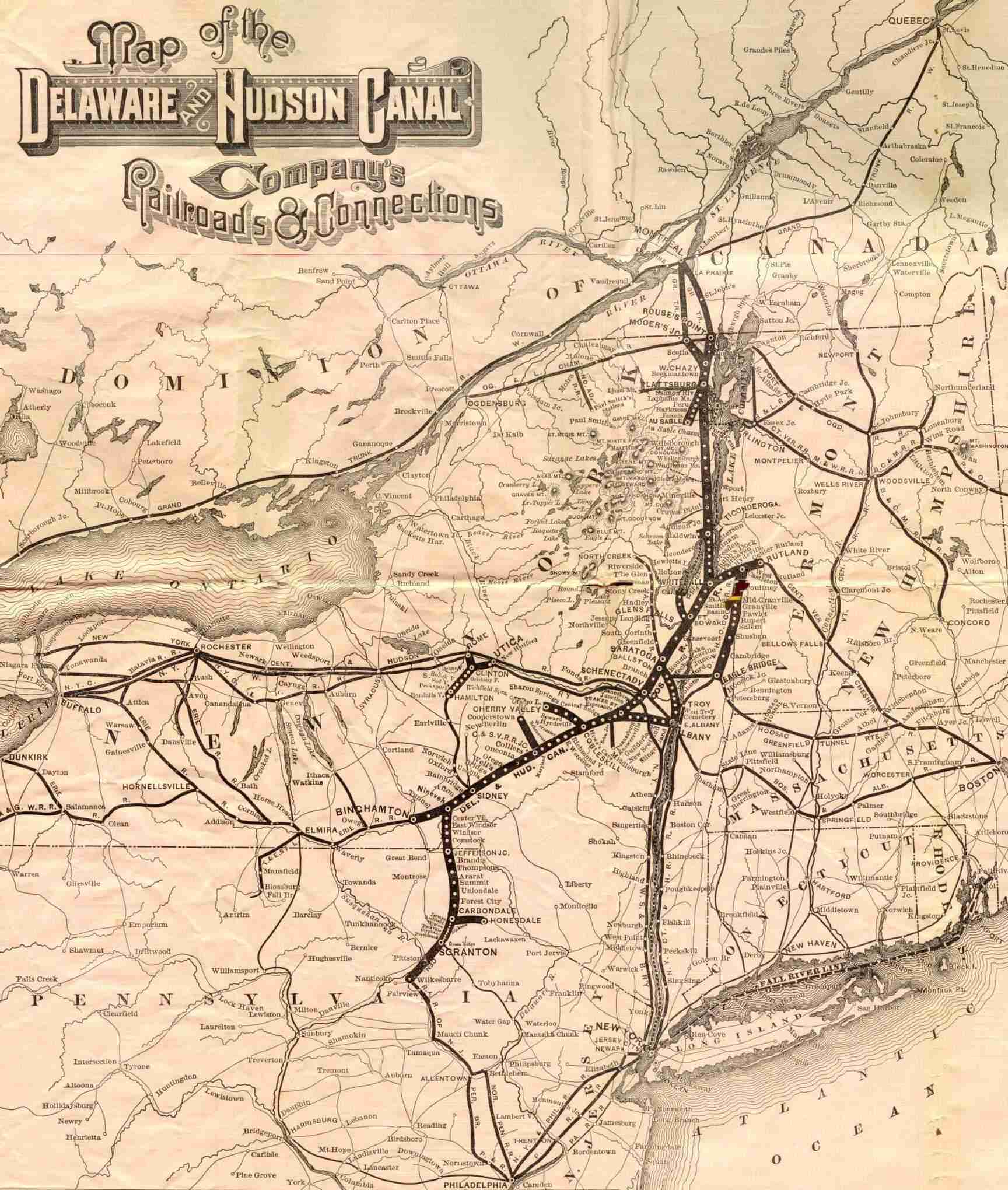|
ALCO RS-2
The ALCO RS-2 is a B-B diesel-electric locomotive built by the American Locomotive Company (ALCO) from 1946 to 1950. ALCO introduced the model after World War II as an improvement on the ALCO RS-1. Between 1946 and 1950, 377 examples of the RS-2 were built, primarily for American and Canadian customers. ALCO discontinued the RS-2 in 1950 in favor of the very similar RS-3, which was significantly more popular. Several examples have been preserved. Design and development The RS-2 was a further development of the road switcher concept. It had more horsepower than the RS-1, to better meet the needs of heavy road service. Externally, the RS-2 bodywork was more rounded, while mechanically the new 244 engine was introduced. A turbocharged four stroke V12 with a bore and stroke developing 1,500 (later 1,600) hp at 1,000 rpm, it had a smaller cylinder, higher cylinder speed design than the 539 used in the RS-1. Production of the RS-2 was delayed several months while Alco worked o ... [...More Info...] [...Related Items...] OR: [Wikipedia] [Google] [Baidu] |
Turbocharged
In an internal combustion engine, a turbocharger (often called a turbo) is a forced induction device that is powered by the flow of exhaust gases. It uses this energy to compress the intake gas, forcing more air into the engine in order to produce more power for a given engine displacement, displacement. The current categorisation is that a turbocharger is powered by the kinetic energy of the exhaust gasses, whereas a supercharger is mechanically powered (usually by a belt from the engine's crankshaft). However, up until the mid-20th century, a turbocharger was called a "turbosupercharger" and was considered a type of supercharger. History Prior to the invention of the turbocharger, forced induction was only possible using mechanically-powered superchargers. Use of superchargers began in 1878, when sev ...[...More Info...] [...Related Items...] OR: [Wikipedia] [Google] [Baidu] |
Alton And Southern Railway
The Alton and Southern Railway is a switching railroad in the Greater St. Louis area in Illinois. It is a wholly owned subsidiary of the Union Pacific Railroad. Overview The Alton and Southern ''Railroad'' was formed in 1910, and in 1913 it absorbed the Denverside Connecting Railway (founded in 1910), and the Alton and Southern ''Railway'' (founded in 1911). The company was operated as a subsidiary of the Aluminum Ore Company, which was itself a subsidiary of the Aluminum Company of America (Alcoa), to serve the Bayer process bauxite-to-alumina refinery at Alorton, Illinois. Alcoa sold the line to the Missouri Pacific Railroad and Chicago and North Western Railway (CNW) in 1968, and it was reorganized as the Alton and Southern ''Railway''. In 1972, CNW's share was sold to the St. Louis Southwestern Railway. In 1982, the Union Pacific Railroad (UP) took ownership of the Missouri Pacific share and then became full owner in 1996 with the acquisition of SSW parent Southern Pacifi ... [...More Info...] [...Related Items...] OR: [Wikipedia] [Google] [Baidu] |
Steam Generator (railroad)
A steam generator is a type of boiler used to produce steam for climate control and potable water heating in railroad passenger cars. The output of a railroad steam generator is low pressure, saturated steam that is passed through a system of pipes and conduits throughout the length of the train. Steam generators were developed when diesel locomotives started to replace steam locomotives on passenger trains. In most cases, each passenger locomotive was fitted with a steam generator and a feedwater supply tank. The steam generator used some of the locomotive's diesel fuel supply for combustion. When a steam generator-equipped locomotive was not available for a run, a so-called "heating car" fitted with one or two steam generators was inserted between the last locomotive in the consist and the rest of the train. Steam generators would also be fitted to individual cars to enable them to be heated independently of any locomotive supply. In Ireland, Córas Iompair Éireann used "heat ... [...More Info...] [...Related Items...] OR: [Wikipedia] [Google] [Baidu] |
Laurentian (train)
The ''Laurentian'' was a named passenger train operated by the Delaware and Hudson Railway between New York City and Montreal, providing same-day daylight service. The train used the D&H's famed route along Lake Champlain north of Albany, New York. The ''Laurentian'', along with its overnight companion the '' Montreal Limited'' (#61 northbound/#62 southbound), was the flagship of the D&H from its inauguration in 1923 until its discontinuance on April 30, 1971. Since 1974, Amtrak has operated the '' Adirondack'' over the same route. History The D&H inaugurated the ''Laurentian'' in 1923 as a daytime service between New York City and Montreal, Quebec, via Albany and Lake Champlain. On the D&H section, steam locomotives pulled the train from its inception until 1953, when it received diesel equipment. The New York Central Railroad handled the train between New York and Albany. From the time of the NYC's merger with the Pennsylvania Railroad in 1968, the New York City to Albany se ... [...More Info...] [...Related Items...] OR: [Wikipedia] [Google] [Baidu] |
Delaware And Hudson Railway
The Delaware and Hudson Railway (D&H) is a railroad that operates in the Northeastern United States. In 1991, after more than 150 years as an independent railroad, the D&H was purchased by the Canadian Pacific Railway (CP). CP operates D&H under its subsidiary Soo Line Corporation which also operates Soo Line Railroad. D&H's name originates from the 1823 New York state corporation charter listing "The President, Managers and Company of the Delaware & Hudson Canal Co." authorizing an establishment of "water communication" between the Delaware River and the Hudson River. Nicknamed "The Bridge Line to New England and Canada," D&H connected New York with Montreal, Quebec and New England. D&H has also been known as "North America's oldest continually operated transportation company." On September 19, 2015, the Norfolk Southern Railway completed acquisition of the D&H South Line from CP. The D&H South Line is 282 miles (454 kilometers) long and connects Schenectady, New York, to ... [...More Info...] [...Related Items...] OR: [Wikipedia] [Google] [Baidu] |
EMD GP9
The EMD GP9 is a four-axle diesel-electric locomotive built by General Motors' Electro-Motive Division between 1954 and 1959. The GP9 succeeded the GP7 as the second model of EMD's General Purpose (GP) line, incorporating a new sixteen-cylinder engine which generated . This locomotive type was offered both with and without control cabs; locomotives built without control cabs were called GP9B locomotives. EMD constructed 3,626 GP9s, including 165 GP9Bs. An additional 646 GP9s were built by General Motors Diesel, EMD's Canadian subsidiary, for a total of 4,257 GP9s produced when Canadian production ended in 1963. The GP9 was succeeded by the similar but slightly more powerful GP18. Design and Production EMD designed the GP9 as an improved version of the GP7, with an increase in power from 1,500 hp to 1,750 hp, and a change in prime mover to the latest version of the 567 engine, the 567C. Externally, the GP9 strongly resembled its predecessor. Most were built with high short ho ... [...More Info...] [...Related Items...] OR: [Wikipedia] [Google] [Baidu] |
EMD GP7
The EMD GP7 is a four-axle ( B-B) diesel-electric locomotive built by General Motors Electro-Motive Division and General Motors Diesel between October 1949 and May 1954.Pinkepank, Jerry A. (1973) pp. 53 Power was provided by an EMD 567B 16-cylinder engine which generated . The GP7 was offered both with and without control cabs, and those built without control cabs were called a GP7B. Five GP7B's were built between March and April 1953. The GP7 was the first EMD road locomotive to use a hood unit design instead of a car-body design. This proved to be more efficient than the car body design as the hood unit cost less to build, was cheaper and easier to maintain, and had much better front and rear visibility for switching. Of the 2,734 GP7's built, 2,620 were for American railroads (including 5 GP7B units built for the Atchison, Topeka and Santa Fe Railway), 112 were built for Canadian railroads, and 2 were built for Mexican railroads. This was the first model in EMD's GP ... [...More Info...] [...Related Items...] OR: [Wikipedia] [Google] [Baidu] |
Baldwin DRS-4-4-1500
The Baldwin DRS-4-4-1500 was a diesel-electric locomotive of the road switcher type rated at , that rode on two-axle trucks, having a B-B wheel arrangement. It was manufactured by Baldwin Locomotive Works from 1947 until it was replaced in 1950 by the AS-16 The Raduga Kh-15 or RKV-15 (russian: Х-15; NATO: AS-16 "Kickback"; GRAU:) is a Russian hypersonic aero-ballistic air-to-ground missile carried by the Tupolev Tu-22M and other bombers. Originally developed as a standoff nuclear air-to-ground .... Nine railroads bought 35 locomotives, with five railroads later buying the successor model. References * {{Baldwin diesels B-B locomotives DRS-4-4-1500 Diesel-electric locomotives of the United States Railway locomotives introduced in 1947 Standard gauge locomotives of the United States ... [...More Info...] [...Related Items...] OR: [Wikipedia] [Google] [Baidu] |
FM H-15-44
The FM H-15-44 was a diesel locomotive manufactured by Fairbanks-Morse from September 1947 to June 1950. The locomotive was powered by a , eight-cylinder opposed piston engine as its prime mover, and was configured in a B-B wheel arrangement mounted atop a pair of two-axle AAR Type-B road trucks with all axles powered. The H-15-44 featured an offset cab design that provided space for an optional steam generator in the short hood, making the model versatile enough to work in passenger service as well as freight duty. Raymond Loewy heavily influenced the look of the unit, which emphasized sloping lines and accented such features as the radiator shutters and headlight mounting, as is found oCNJR #1501anKCS #40 The cab-side window assembly incorporated "half moon"-shaped inoperable panes which resulted in an overall oblong shape. The platform (underframe An underframe is a framework of wood or metal carrying the main body structure of a railway vehicle, such as a locomotive, ca ... [...More Info...] [...Related Items...] OR: [Wikipedia] [Google] [Baidu] |
Baldwin Locomotive Works
The Baldwin Locomotive Works (BLW) was an American manufacturer of railroad locomotives from 1825 to 1951. Originally located in Philadelphia, it moved to nearby Eddystone, Pennsylvania, in the early 20th century. The company was for decades the world's largest producer of steam locomotives, but struggled to compete as demand switched to diesel locomotives. Baldwin produced the last of its 70,000-plus locomotives in 1951, before merging with the Lima-Hamilton Corporation on September 11, 1951, to form the Baldwin-Lima-Hamilton Corporation. The company has no relation to the E.M. Baldwin and Sons of New South Wales, Australia, a builder of small diesel locomotives for sugar cane railroads. History: 19th century Beginning The Baldwin Locomotive Works had a humble beginning. Matthias W. Baldwin, the founder, was a jeweler and whitesmith, who, in 1825, formed a partnership with machinist David H. Mason, and engaged in the manufacture of bookbinders' tools and cylinders for cal ... [...More Info...] [...Related Items...] OR: [Wikipedia] [Google] [Baidu] |
Fairbanks-Morse
Fairbanks, Morse and Company was an American manufacturing company in the late 19th and early 20th century. Originally a weighing scale manufacturer, it later diversified into pumps, engines, windmills, coffee grinders, radios, farm tractors, feed mills, locomotives, and industrial supplies until it was purchased by Penn Texas in 1958. There are three separate corporate entities that could be considered successors to the company, none of which is a complete and direct descendant of the original company. All claim the heritage of Fairbanks Morse and Company: * Fairbanks Scales is a privately owned company in Kansas City, Missouri, that manufactures scales * Fairbanks Morse Defense, a subsidiary company of Arcline Investment Management, is a company based in Beloit, Wisconsin, that manufactures and services engines * Fairbanks Nijhuis is a part of Pentair Water in Kansas City, Kansas, and manufactures pumps Founding and early history Fairbanks Morse and Company began in 1823 whe ... [...More Info...] [...Related Items...] OR: [Wikipedia] [Google] [Baidu] |







